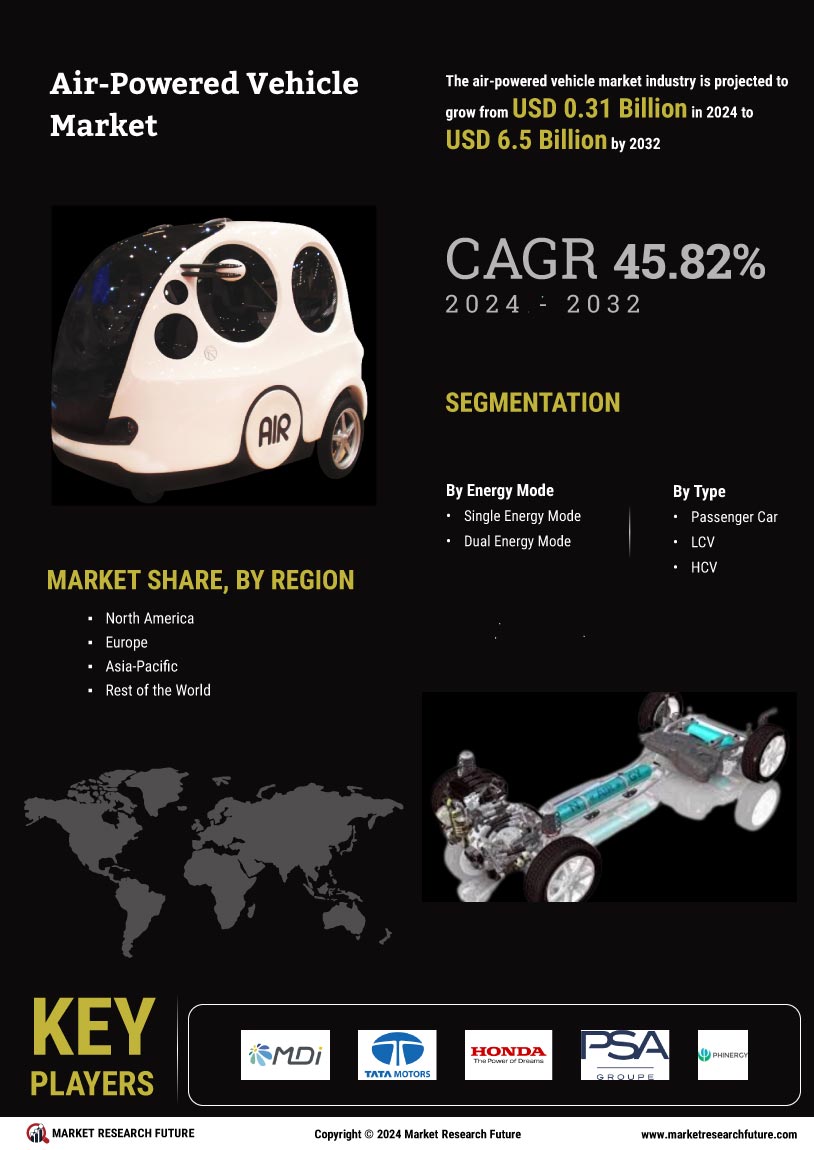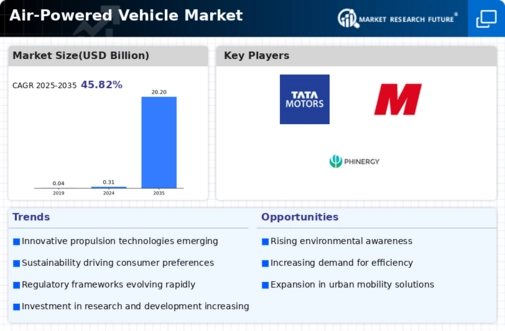Rising Fuel Prices
The escalating prices of traditional fuels have catalyzed interest in alternative energy sources, including the Air-Powered Vehicle Market. As consumers and businesses seek cost-effective solutions, air-powered vehicles present a viable option. The potential for reduced operational costs is appealing, especially in sectors like logistics and public transportation. In recent years, fuel prices have shown volatility, prompting a shift towards sustainable alternatives. The Air-Powered Vehicle Market could benefit from this trend, as it offers a solution that may mitigate the financial burden associated with conventional fuel sources. Furthermore, as fuel prices continue to rise, the demand for air-powered vehicles is likely to increase, positioning this market for substantial growth.
Environmental Regulations
Stringent environmental regulations are increasingly shaping the automotive landscape, thereby influencing the Air-Powered Vehicle Market. Governments worldwide are implementing policies aimed at reducing carbon emissions and promoting cleaner technologies. These regulations create a favorable environment for air-powered vehicles, which are perceived as a cleaner alternative to traditional combustion engines. The Air-Powered Vehicle Market stands to gain from these regulatory frameworks, as manufacturers are incentivized to innovate and develop vehicles that comply with environmental standards. As more countries adopt ambitious climate goals, the demand for air-powered vehicles may surge, aligning with regulatory expectations and consumer preferences for sustainable transportation.
Technological Innovations
Technological advancements are pivotal in driving the Air-Powered Vehicle Market forward. Innovations in air compression technology and lightweight materials are enhancing the efficiency and performance of air-powered vehicles. Recent developments suggest that these vehicles can achieve competitive ranges and speeds, making them more appealing to consumers. The integration of smart technologies, such as advanced navigation systems and energy management tools, further enhances the user experience. As research and development continue to progress, the Air-Powered Vehicle Market is likely to witness an influx of new models and features, attracting a broader audience and potentially increasing market share.
Investment in Infrastructure
Investment in infrastructure is a crucial driver for the Air-Powered Vehicle Market. As governments and private entities allocate funds towards developing charging and refueling stations for alternative energy vehicles, the feasibility of air-powered vehicles increases. Enhanced infrastructure not only supports the operational needs of these vehicles but also instills consumer confidence in their practicality. Recent initiatives have shown a commitment to expanding the necessary facilities for air-powered vehicles, which could lead to a more robust market presence. The Air-Powered Vehicle Market stands to benefit from these investments, as improved infrastructure may facilitate greater adoption and usage of air-powered technologies.
Consumer Awareness and Demand
Growing consumer awareness regarding environmental issues is significantly impacting the Air-Powered Vehicle Market. As individuals become more conscious of their carbon footprints, there is a rising demand for eco-friendly transportation options. This shift in consumer behavior is prompting manufacturers to invest in air-powered vehicle technologies. Surveys indicate that a substantial percentage of consumers are willing to consider alternative fuel vehicles, including those powered by compressed air. The Air-Powered Vehicle Market is poised to capitalize on this trend, as increased awareness translates into higher sales and market penetration. The potential for a more sustainable future is driving interest in these innovative vehicles.

















Leave a Comment